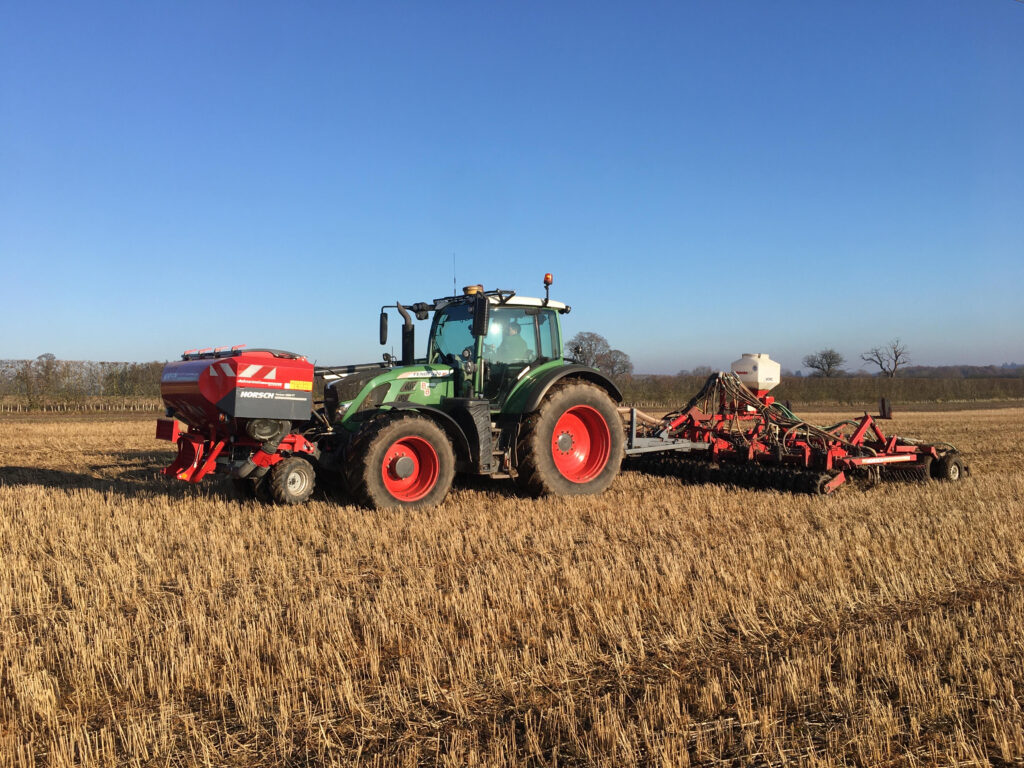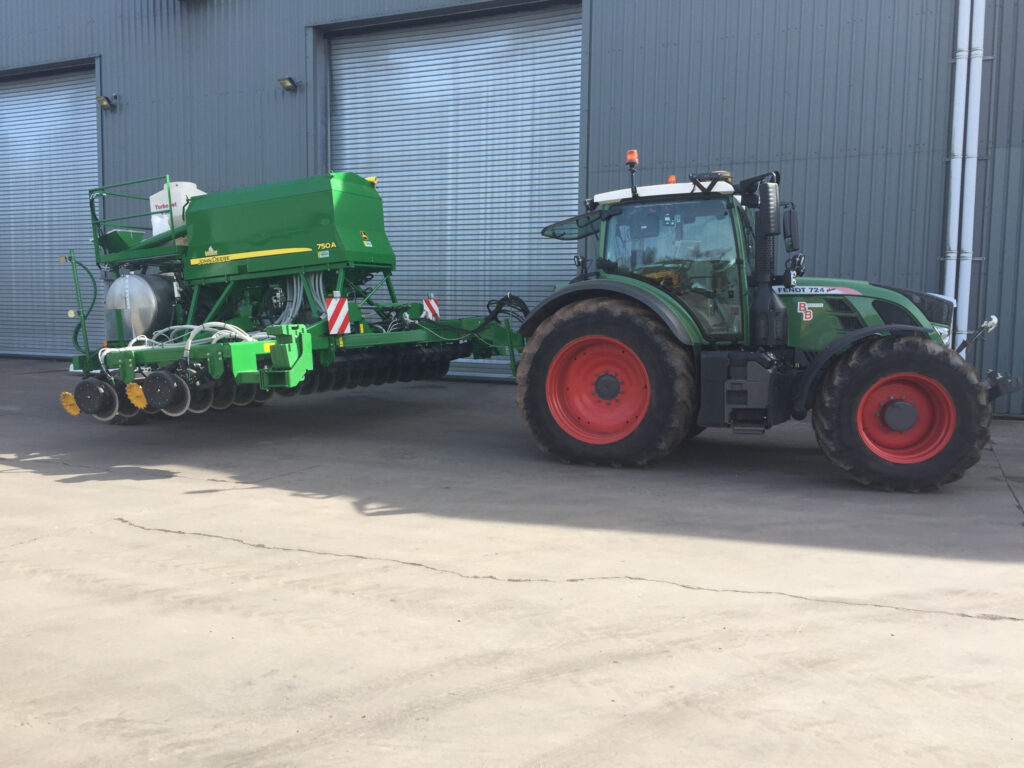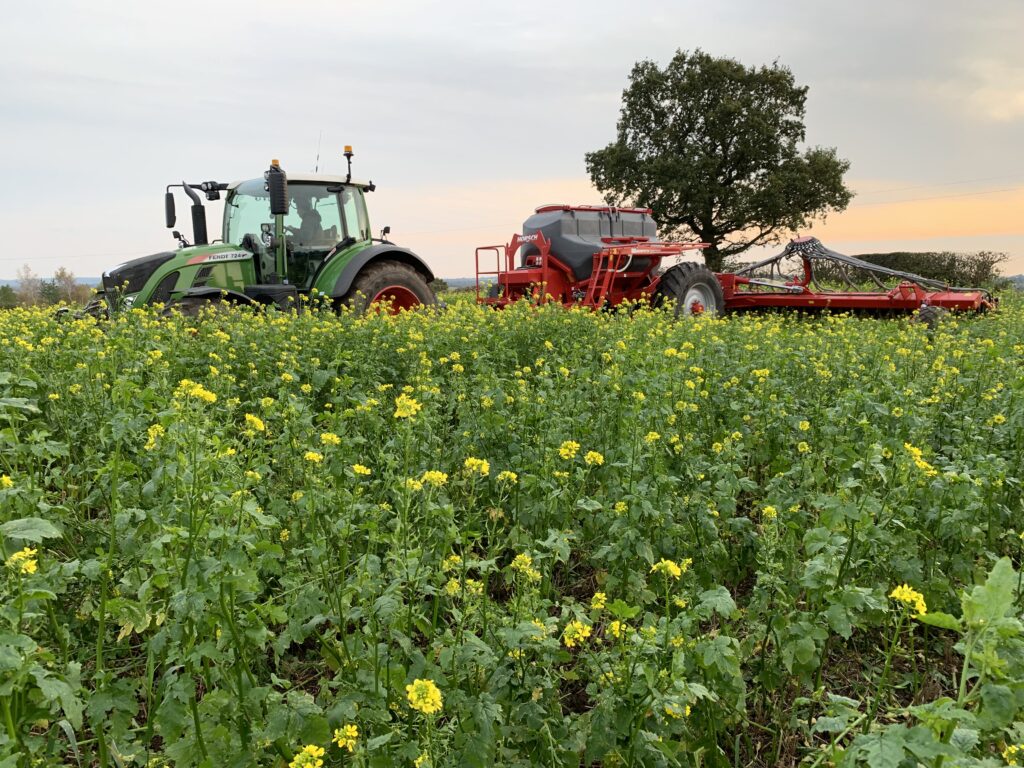Written by Clive Bailye
It seems like such a long time ago now, but back in 2008 when we made the decision to stop cultivating and direct drill everything, there really wasn’t a lot of drills on the market to choose from. This made our choice relatively straightforward, but also brought compromises that often saw us heading to the farm workshop to modify and adapt what we felt was needed.
Our own previous “min-till” establishment system revolved around a single Simba solo cultivation train with a DD press. This was followed by a Vaderstad Rapid cultivator drill a few weeks later after applying glyphosate to a good weed and volunteer chit. It worked well for nearly a decade and was consistent, but it was expensive, time-consuming, high-horsepower dependent, and required lots of fuel, capital, and wearing metal, all adding to an unsustainable high fixed-cost structure.
We didn’t just rush into buying our first true direct drill without our own R&D phase. We started by using that existing Rapid drill to direct, without cultivation, at the easy points in the rotation, such as wheat after beans or OSR, where the drill’s ability to handle high levels of previous crop residue was not an issue. Although not designed to be a “direct drill,” in the right situation, it was perfectly capable of doing the job and certainly provided the proof-of-concept confidence we needed to sell those big tractors and cultivators and start direct drilling every crop.
We had also learned where the mechanical challenges would be for replacement machinery on our soil types and our rotation. In high trash situations, a drill’s ability to keep residue flowing and not block was essential, especially now as we planned to grow cover crops at every possible opportunity and drill directly into them. We found a disc-based coulter best in these situations, but we had also seen how a disc can sometimes “hairpin” straw, creating establishment and agronomic issues.
When conditions are dry, without soil loosening cultivations, penetration can be a challenge for drills not designed to work directly, resulting in a compromise to seeding depth and coverage. Conversely, when conditions are wet, smearing of the seed slot or failure to close it successfully and cover the seed can be the challenge. Mechanical and agronomic solutions to these issues have occupied my mind and those of many agricultural engineers over the years, resulting in an evolution of direct drills that today make things easier than ever, or in my case lots of farm workshop time spend chopping and tweaking existing machinery.

Back in 2008, a visit to Simon Chilles, a long-term direct drilling guru in Kent, resulted in us buying his old John Deere 750a as our first proper direct drill. These drills were a rare thing in the UK, and his 4m was the only one available at that time. I recall trying to buy parts for it from our local JD dealership, whose parts counter had no knowledge of what a “750a” even was!
Being used to the capacity of a 6m rapid, we felt more capacity was required than 4m alone, so we also bought a used Dale tine drill, feeling we had the best of both worlds in the ability to drill cover crops with the 750a discs and the Dale tine to use where hair pinning was an issue.
Both drills performed well and excelled in accurate seeding depth however, after that our first season with them both, it was clear we had seriously underestimated just how much time not cultivating would gift us. We didn’t need both drills, so we sold the Dale, imported Australian-designed row cleaners and fitted them to the 750a to deal with the hair pinning issue.
As workload increased over the next few years, the 4m was eventually changed for a new 6m which we immediately cut in half to extend the chassis and added a liquid fertilizer tank, granular applicators for Avadex and slug pellets, a split hopper for companion crops, and row cleaners, all of which features are either standard fit can be optioned from the factory on many of the drills available now. We learned in wetter seasons that a disc could smear on our soils and blocked where a tine didn’t, so we bought an old Horsch CO6 and modified it with a Bourgault VOS tines to act as insurance for such years, an investment that paid back handsomely in the very wet autumn of 2020.

Over time, we have customized our own solutions to get the machinery that we needed to consistently direct drill our soils. Meanwhile, the interest among UK farmers in direct drilling has grown significantly, and along with it, so has the choice of drills.
By the time our 750a was due for replacement, there was so much more choice of suitable machinery that didn’t need farm workshop adaptations to add options we wanted. I have become a fan of wider row widths in cereals, and with our drill tractor size dictated at a 240hp minimum to be able to pull our trailed sprayer and 18t grain trailers, it had always been too big for the 6m John Deere. The added efficiency of being able to operate a 12m Horsch Avatar with the same tractor was just too tempting. Its coulters familiar with a similar layout to the 750a and with large split hoppers, fertiliser placement all factory options, so no need for farm modifications.
My soils and my rotation will of course differ from those of others, as is always the case in farming there is no simple “copy and paste” solution that will work for all; every farm is different, and time and effort will need to be invested in researching solutions.
Experience here reflects the evolution of how the direct drill market has now created a huge choice of fantastic machinery available from so many quality manufacturers meaning a solution is now available to suit most soils and rotations.
Compared to my lack of choice 16 years ago, the question today is, how do you decide which of these many machines is right for you? Hopefully, this supplement and the QR code links to Phillip Wrights video interviews with some of the manufactures at the Cereals event this year provides a good starting point for initial comparison to help you make good, informed decisions.


